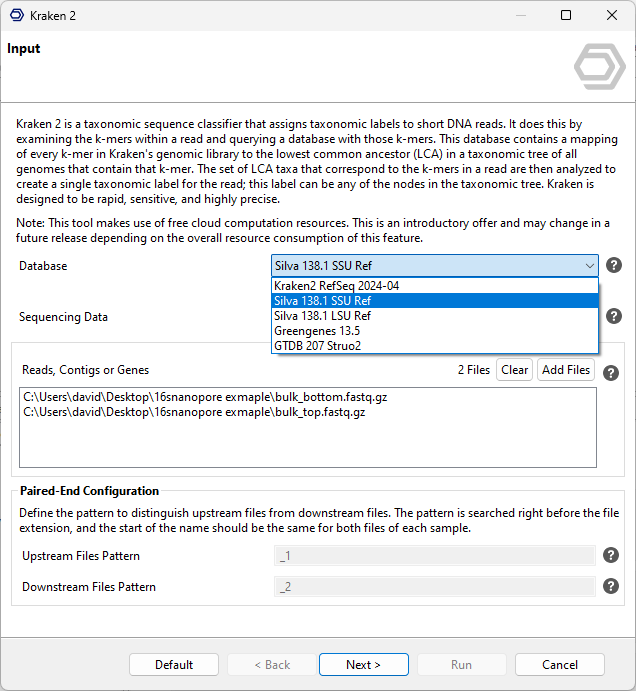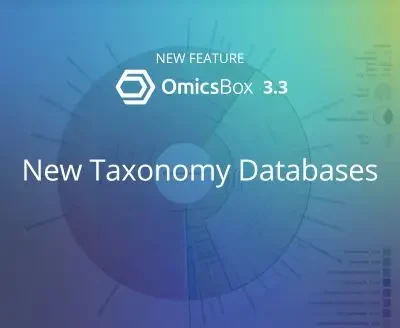One of the new additions in OmicsBox 3.3 is the non-NCBI taxonomy databases for Kraken2. With this new feature, we provide users with a broader range of options for taxonomic classification, meeting diverse research needs.
Taxonomic Classification with Kraken2
Kraken2 is a taxonomic sequence classifier that assigns taxonomic labels to DNA reads. It achieves this by examining the k-mers within a read and querying a database with those k-mers. The database comprises a mapping of every k-mer in Kraken2’s genomic library to the lowest common ancestor (LCA) in a taxonomic tree of all genomes containing that k-mer. The set of LCA taxa corresponding to the k-mers in a read is then analyzed to assign a single taxonomic label to the read. This label can correspond to any node in the taxonomic tree. Kraken2 is designed for speed, sensitivity, and high precision, making it suitable for both metagenomics WGS and 16S/ITS amplicon read input data.
To execute Kraken2, navigate to Metagenomics > Taxonomic Classification > Kraken 2. You can visualize and explore the taxa contained in each database via Taxonomic Classification > Database Info.
Available Databases
We currently provide access to the following non-NCBI databases:
- Silva 138.1 SSU and LSU: The SILVA SSU database contains small subunit (16S/18S) rRNA sequences, while the SILVA LSU database contains large subunit (23S/28S) rRNA sequences. The SILVA SSU database is beneficial for broad taxonomic classification across all three domains of life (Bacteria, Archaea, and Eukarya). Whereas the SILVA LSU database provides higher resolution for phylogenetic analysis and is particularly useful for eukaryotic sequences.
- Greengenes 13.5: A comprehensive 16S rRNA gene database that is widely used for microbial community analysis.
- GTDB: The Genome Taxonomy Database (GTDB) provides a standardized taxonomy based on genome phylogeny, offering a robust framework for comparative genomics.
The choice of databases depends on the nature of the input data and the specific research question at hand. We encourage users to explore these new options to enhance their taxonomic classification workflows.

For more information and detailed instructions on using these databases, please visit our OmicsBox User Manual. You can also contact our support team.

